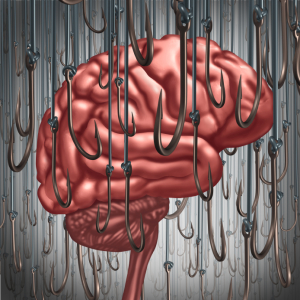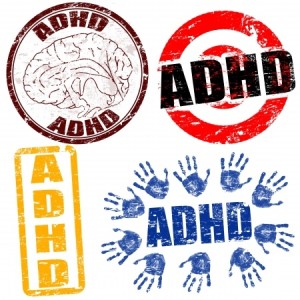Academic Steroids
In response to the growing problem of the abuse of ADHD medications by college students, colleges and universities are instituting a variety of new campus rules. Some college clinicians are forbidden from diagnosing ADHD. Several now require students who bring ADHD medication from home to sign a contract that they will not divert their medications. Others require students to sign a release to have school officials confirm the truth of reported symptoms with parents. Duke University declared the nonmedical use of ADHD drugs to be a form of academic dishonesty. And Harvard is being sued for malpractice by the parents of a student who received an ADHD diagnosis and medication after one meeting with a clinical nurse specialist.
Mad in America pointed to an article by Watson et al., “The ADHD Drug Abuse Crisis on American College Campuses” and noted that ADHD drugs like Ritalin and Adderall have become so common on college campuses that there have been “exponential increases in emergency room visits, overdoses, and suicides by students taking these drugs.”
While ADHD meds are popularly known as “academic steroids,” there is no clear evidence that they facilitate cognitive functioning or scholarship. In fact, “compelling new evidence indicates that ADHD drug treatment is associated with deterioration in academic and social-emotional functioning.” Lower GPAs have been found to be associated with HIGHER rates of ADHD drug abuse in a couple of studies (Arria et al., 2008; McCabe et al., 2005). But this effect is not just limited to students with lower GPAs. ADHD drug abuse is a more common problem at competitive colleges and universities with high admission standards. “There is an emerging trend for medical students to abuse these drugs.”
There was a story in The New York Times about a student who died from prescribed ADHD medications. He never had ADHD, but used a classmate’s ADHD medications to cram for exams. Then he decided to get his own prescription to help him study for medical school entrance exams. He had been a presidential scholar with a high GPA. His academic performance plummeted AFTER he began to use ADHD drugs. This raises the possibility “that low GPAs may often follow—not always precede—use of the medication.” Eventually he became violently delusional and spent a week in a psychiatric hospital. Upon his release, his doctor gave him another prescription for 90 days of Adderall. He hung himself in his bedroom two weeks after he was out of Adderall.
The substantial risk associated with stimulant drug treatment might be best evaluated against associated academic and/or social emotional gains—namely, the reason that the drugs get prescribed in the first place. After 30 years of research on the topic, not a single study has linked ADHD drug treatment with improved academic outcomes. Hundreds of studies have documented that it is associated with short-term improvements in focus and performance on boring, repetitive tasks; nevertheless, these gains have not been shown to translate to improvements in higher order learning or scholarship.
ADHD drugs have a high addictive potential and as early as 1995, the DEA was warning about the potential for abuse with methylphenidate, the generic name for Ritalin, Concerta, and Daytrana. Although it is regularly described as benign, it has the same abuse potential as other Schedule II stimulants, like cocaine and methamphetamine.
It’s been long established that neither drug addicts nor lab rats can distinguish between cocaine and methylphenidate [Ritalin, Concerta, Daytrana]. Now, a growing body of evidence has actually linked methylphenidate treatment to an increase proclivity toward cocaine abuse in rats. These preclinical findings add to the cautionary note about lax attitudes toward ADHD diagnosis, which has the potential to become the gateway to more serious substance use and abuse.
The lead author of the article, “The ADHD Drug Abuse Crisis on American College Campuses,” Gretchen LeFever Watson, is no stranger to the ADHD wars. In the mid 1990s, she began a program of ADHD research. When LeFever et al. published their findings in the American Journal of Public Health, they concluded that the high prevalence rates found by their study suggested that “ADHD was overdiagnosed and overtreated in some groups of children.” They called for additional prevalence studies:
Further research is needed to clarify the long-term social, psychological, and biological consequences of ADHD drug therapy; to determine the prevalence of multimodal ADHD treatment; and to provide a framework for design and implementation of educational programs that ensure appropriate use of stimulant medications and nonpharmacologic interventions.
But in the course of her ongoing efforts to improve ADHD treatment in southeastern Virginia, the area where she did her research, “LeFever was repeatedly attacked for reporting high rates of ADHD diagnosis and treatment.” One of the attacks was an anonymous allegation of scientific misconduct. Although she was ultimately cleared of all allegations, the net effect of the attacks against her was that her research into psychosocial interventions that “raised questions about the effectiveness of ADHD drug treatment was terminated and study findings were suppressed.” You can read a detailed description of LeFever’ s research and the attacks on her here: “Shooting the Messenger: The Case of ADHD.”
The reason her work was targeted is simple—it conflicted with drug industry interests. So ADHD experts with ties to the pharmaceutical industry repeatedly launched ad hominem attacks upon LeFever Watson and her work. “These attacks ultimately led to a decade of significant ADHD research and community-based interventions being mischaracterized in professional venues and media outlets.” The eventual suppression of her work contributed to the escalation and expansion of ADHD diagnosis and drug treatment among Americans of all ages.
The rate of ADHD diagnosis now exceeds all reasonable estimates of the true prevalence of the disorder. As a consequence, ADHD drugs are readily available on American high school and college campuses where they are increasingly abused with serious and sometimes lethal consequences.





